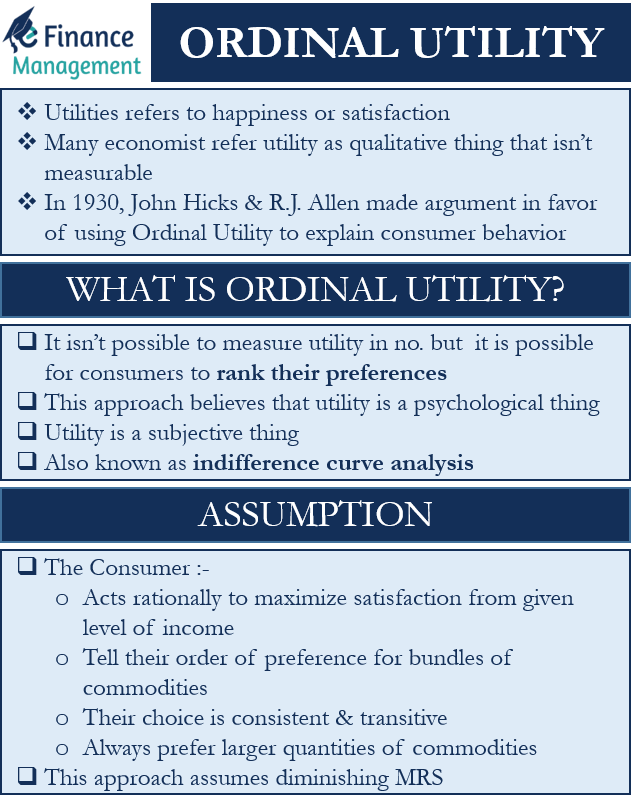The utility is an important term in economics as it refers to satisfaction. Measuring utility has always been a topic of debate. Many economists view utility as a qualitative thing that isn’t measurable. On the other hand, many economists believe utility is measurable. Thus, there are two main theories for utility – one that says the utility is measurable in absolute terms and the other that says the utility isn’t measurable, but it is possible to rank it. The former approach is called Cardinal Utility, while the latter one is called Ordinal Utility. In this article, we will look at the Ordinal Utility.
Modern economists are the proponents of the Ordinal Utility approach, unlike the neo-classical economists, who believe it is possible to express utility in cardinal numbers. In 1930, John Hicks and R.J. Allen made an argument in favor of using Ordinal Utility to explain consumer behavior.
What is Ordinal Utility?
As per Ordinal Utility, it isn’t possible to measure utility in numbers. However, it is possible for consumers to rank their preferences. This approach believes that utility is a psychological thing, something similar to happiness. Also, as per this approach, utility is a subjective thing and varies from person to person.
So, in simple words, we can say that ordinal utility asserts that it is easier to ask a consumer how good a product is in comparison to others instead of how good any product is. For example, it is easy for anyone to tell if they love pizza or burgers, but now how much he loves pizza or burgers.
We can use an indifference curve (IC) to graphically show the preferences of consumers. In fact, the concept of IC is based on the Ordinal Utility approach. Each IC (on an IC map) depicts combinations of two goods that hold equal utility for a consumer. So, if there is more than one IC, then the curve that is distant from the origin offers a higher utility level. Another name for Ordinal Utility theory is indifference curve analysis because IC is the primary analytical tool of this theory.
Thus, as per this approach, one can measure the utility in relative terms, like if a product is less than or equal to or more than the other product. Or, we can say that this approach explains consumer behavior through preferences or rankings. In the pizza and burger example, if a person likes pizza more, then pizza would have a higher rank than the burger.
So, in this approach, ordering or ranking of the satisfaction level is more important.

Ordinal Utility Assumptions
Following are the assumptions of the Ordinal Utility approach:
- Consumer acts rationally to maximize their satisfaction level with a given income level and prices of commodities.
- Consumers can tell their order of preference for the bundles of commodities.
- The choice of a consumer is consistent and transitive. This means if a consumer prefers A over B and B over C, then he must prefer A over C as well. The consistency here implies that the choice of a consumer remains constant over time. It means if a consumer prefers A over B at one point, then he won’t prefer B over A (or even consider them as equal) in another period.
- Consumers always prefer larger quantities of commodities over smaller quantities.
- This approach assumes a diminishing MRS (Marginal Rate of Substitution). MRS is the rate at which a consumer substitutes one commodity for another in a way that the total satisfaction remains the same.
Final Words
The ordinal utility approach states that satisfaction or utility isn’t measurable in numbers. But it is possible for a consumer to rank the satisfaction that they get from different combinations of commodities. This approach is a psychological thing. And the focus is on ranking one combination against another and not by how much a consumer prefers one combination over another.
RELATED POSTS
- Total Utility – Meaning, Importance, and Example
- Law of Equi Marginal Utility – Meaning, Assumptions, and Importance
- Law of Diminishing Marginal Utility
- Marginal Utility – Meaning, Importance, Factors, Types, and Graph
- Types of Utility – Form, Time, Place, Possession, and Other Utilities
- Theory of Demand – Meaning, Demand Curve, Exception, and Graph

